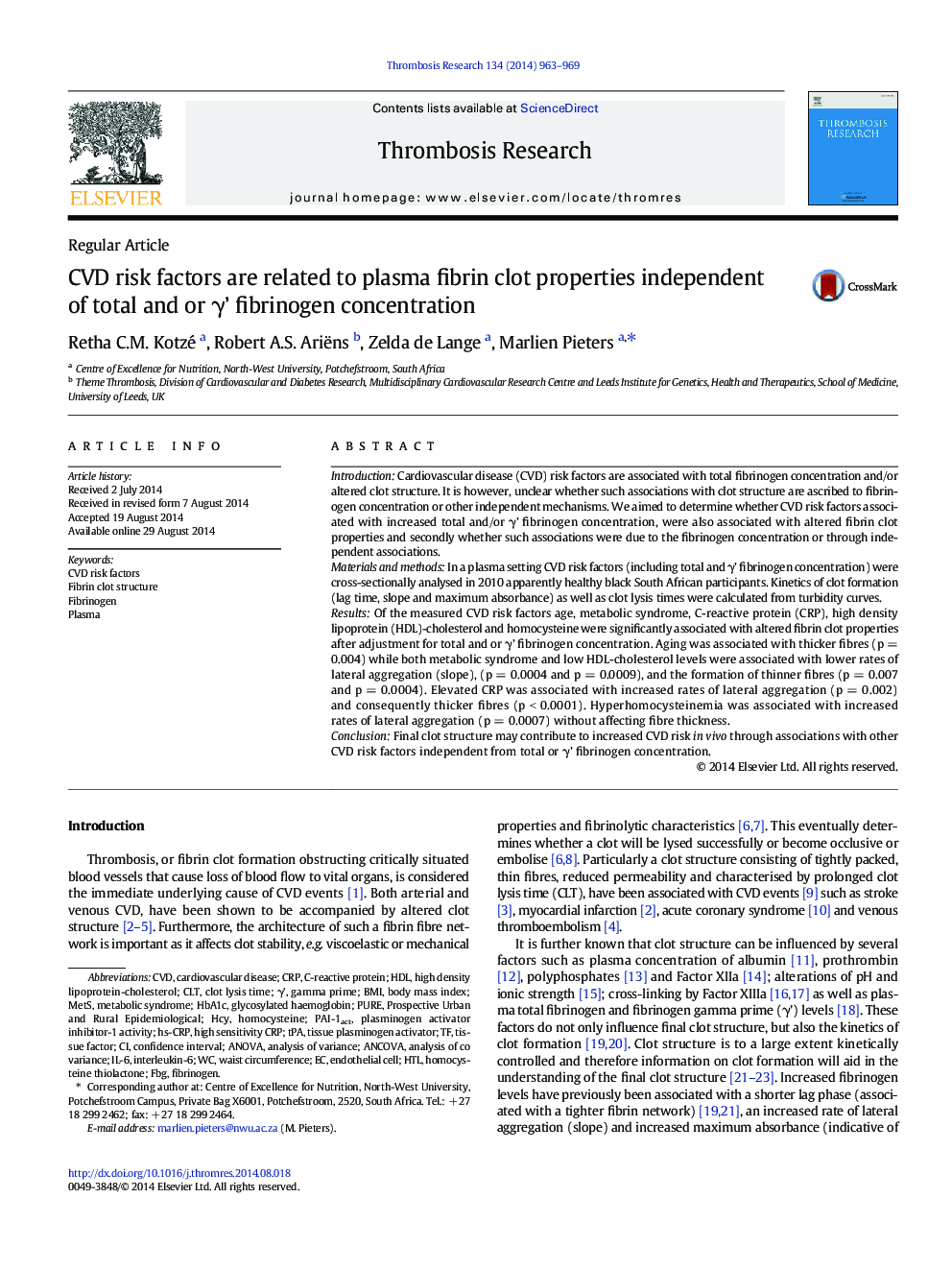| کد مقاله | کد نشریه | سال انتشار | مقاله انگلیسی | نسخه تمام متن |
|---|---|---|---|---|
| 6001699 | 1182956 | 2014 | 7 صفحه PDF | دانلود رایگان |

- associate with several CVD risk factors in vivo independent from fibrinogen level;
- are not simply a consequence of a specific fibrinogen concentration and may,
- thus contribute to CVD risk by independent associations with other CVD risk factor
IntroductionCardiovascular disease (CVD) risk factors are associated with total fibrinogen concentration and/or altered clot structure. It is however, unclear whether such associations with clot structure are ascribed to fibrinogen concentration or other independent mechanisms. We aimed to determine whether CVD risk factors associated with increased total and/or γ' fibrinogen concentration, were also associated with altered fibrin clot properties and secondly whether such associations were due to the fibrinogen concentration or through independent associations.Materials and methodsIn a plasma setting CVD risk factors (including total and γ' fibrinogen concentration) were cross-sectionally analysed in 2010 apparently healthy black South African participants. Kinetics of clot formation (lag time, slope and maximum absorbance) as well as clot lysis times were calculated from turbidity curves.ResultsOf the measured CVD risk factors age, metabolic syndrome, C-reactive protein (CRP), high density lipoprotein (HDL)-cholesterol and homocysteine were significantly associated with altered fibrin clot properties after adjustment for total and or γ' fibrinogen concentration. Aging was associated with thicker fibres (p = 0.004) while both metabolic syndrome and low HDL-cholesterol levels were associated with lower rates of lateral aggregation (slope), (p = 0.0004 and p = 0.0009), and the formation of thinner fibres (p = 0.007 and p = 0.0004). Elevated CRP was associated with increased rates of lateral aggregation (p = 0.002) and consequently thicker fibres (p < 0.0001). Hyperhomocysteinemia was associated with increased rates of lateral aggregation (p = 0.0007) without affecting fibre thickness.ConclusionFinal clot structure may contribute to increased CVD risk in vivo through associations with other CVD risk factors independent from total or γ' fibrinogen concentration.
Journal: Thrombosis Research - Volume 134, Issue 5, November 2014, Pages 963-969